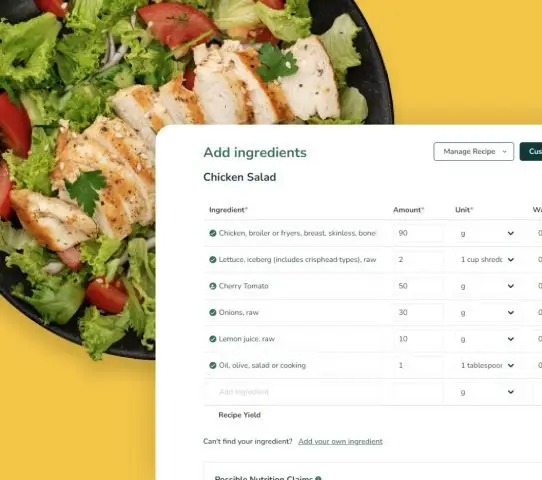When creating a food label, it’s crucial to list all of the ingredients in your product clearly and accurately. To comply with regulatory requirements, you must have a complete ingredient list so consumers can understand exactly what they’re consuming and make informed decisions.
But how do you create an ingredient list?
It’s important to first understand the different types of ingredients that can be included.
See How FoodLabelMaker Can Help You
What are the different types of ingredients?
-
Primary Ingredients
The main components of the food product. These are usually listed first on the ingredient list.
-
Secondary ingredients
Ingredients that are not the main focus of the food product, but are still necessary for its composition. These are typically listed after the primary ingredients.
-
Tertiary ingredients
Ingredients that are used to enhance the flavor or appearance of the food product, but are not essential to its composition. These are usually listed at the end of the ingredient list.
-
Additives
Ingredients that are used to improve the shelf life or flavor of the food product, but are not essential to its composition. These are typically listed at the end of the ingredient list.
A few things to keep in mind when putting together your ingredient list:
- Make sure to list the ingredients in descending order by weight. The heaviest ingredients should be at the top of the list.
- If an ingredient is a mixture of two or more substances, list it by its weight as if it were one substance.
- List any spices or flavoring agents separately from the other ingredients.
- Because a recipe’s ingredients often include many sub-ingredients, you should list all sub-ingredients in parentheses at the end of the ingredient.
- For example, if your recipe contains tomato sauce, it is better to list each ingredient and then tomato sauce, something like: Tomatoes (Tomato Paste (Water, Tomato Paste), Water, Salt, Citric Acid), Contains 2% or less of: Spice, Tomato Fiber, Natural Flavor, Sodium Bisulfite and BHA (To Maintain Color).
- You should also list the quantity of each ingredient, in descending order by weight. For example, a food product that contains water, sugar, and cornstarch would list “Water (80%), Sugar (10%), Cornstarch (5%)” as the ingredient list.
Here’s an example of an ingredient list for a food product:
“Water, sugar, corn syrup, high fructose corn syrup, modified food starch, artificial flavor, citric acid, sodium benzoate (preservative)”.
As demonstrated, the list starts with water, which is the heaviest ingredient. The other ingredients are listed in descending order by weight. And, any spices or flavoring agents are listed separately from the other ingredients.
The most important thing is to make sure that your food product meets the requirements specified by the FDA. Food Label Maker helps you make certain claims by making some suggestions based on your ingredients and the nutrition facts on the label.
Now that you understand the different types of ingredients and labeling claims, it’s time to create your food labels.
Food Label Maker is an online tool that makes this process incredibly easy. You can create a free nutrition label by simply typing in the name of your product, and the software will generate a professional label that meets FDA requirements.
For businesses ready to scale, you can also view our pricing plans to find the right package for your needs and unlock even more powerful features.



